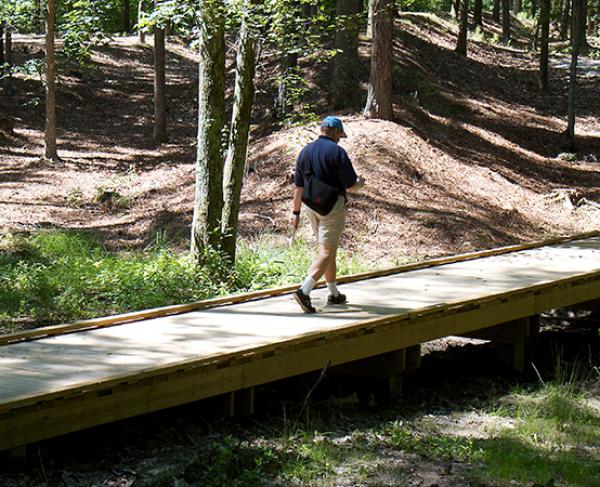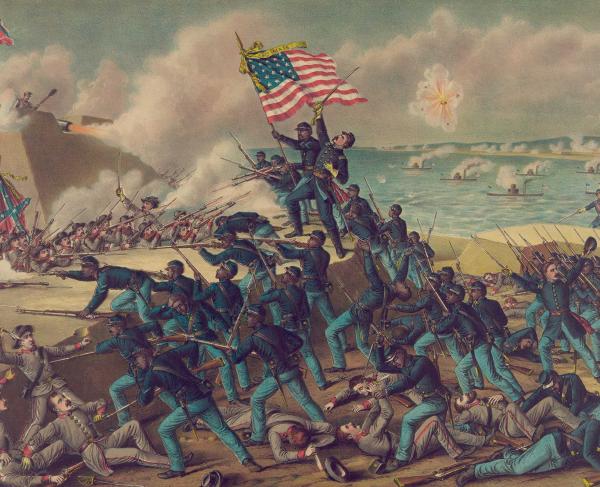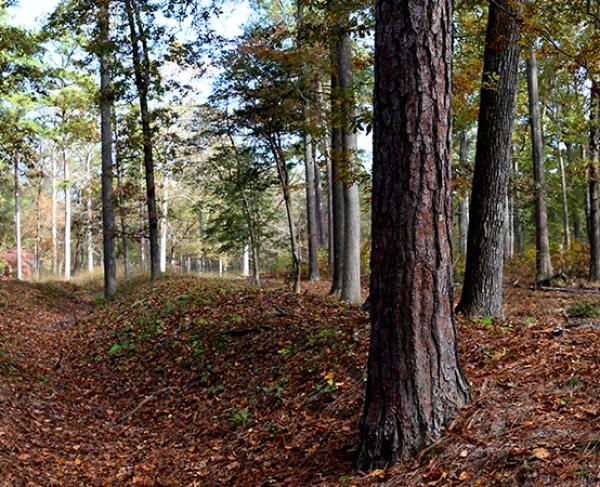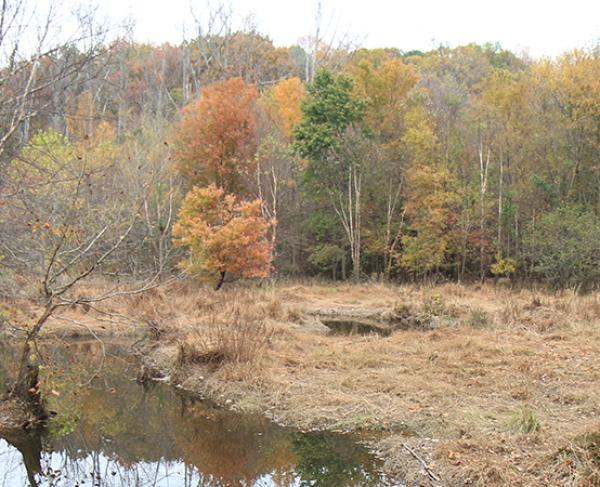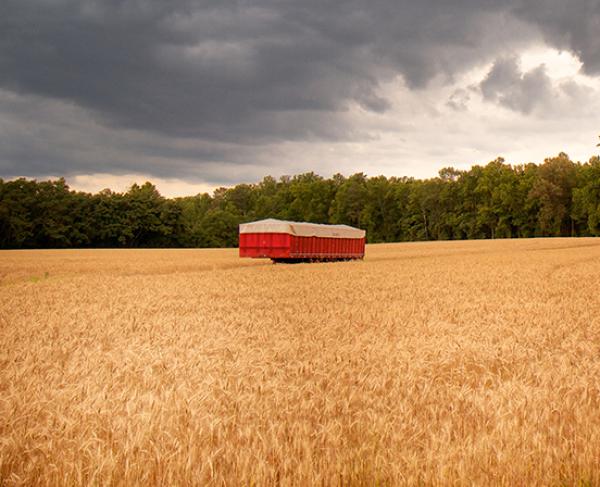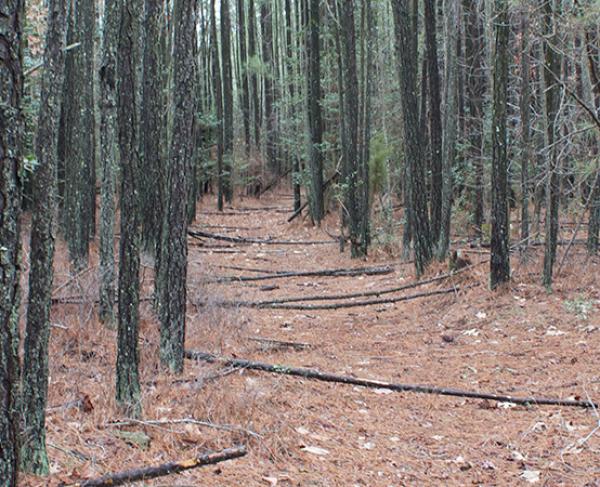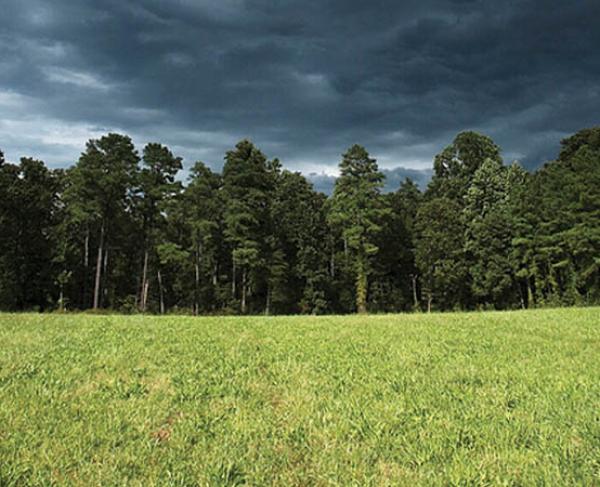Tour Richmond and Petersburg Battlefields in Three Days

The cities of Richmond and Petersburg were vital to the survival of the Confederacy. Known as the "Cockade City," Petersburg was a vital rail and supply center situated 23 miles south of the Richmond. For 292 days, from June of 1864 to April of 1865, Federal forces besieged the city, the longest such siege in United States Army history.
Following the secession of Virginia from the Union, the capital of the Confederacy was transferred from Montgomery, Alabama, to Richmond, Virginia. Besides being home to the Confederate government, Richmond also played host to Confederate hospitals, Tredegar Iron Works, and the notorious Union prisoner of war camps Libby Prison and Belle Isle. Although the city sat 105 miles from the Union capital of Washington D.C., Richmond did not fall into Union hands until April 3, 1865.
The final campaign in the Eastern Theater, the Appomattox Campaign, immediately followed the fall of Richmond and Petersburg.
Acre-for-acre, there are few areas in the Eastern Theater of the American Civil War that witnessed more fighting than did the area surrounding the cities of Richmond and Petersburg.
Before you go:
- Print or download the Tour Map.
- Watch the Civil War Animated map.
- Watch the Overland Campaign Animated Map.
- Download the Malvern Hill Battle App, for more detail and touring assistance.
- Download the Petersburg Battle App, for more detail and touring assistance.
- Download the Appomattox Battle App, for more detail and touring assistance.
Tour Stop #1: Richmond National Battlefield
Time: 6 hours
Details: www.nps.gov/rich/index
Richmond National Battlefield comprises 13 different sites, spanning multiple years of the Civil War. Richmond's Civil War sites range from hospitals to iron works.
What to do:
Start at the National Park Service Visitor Center.
- Pay the parking fee.
- Find out what Ranger Programs are scheduled.
- See the exhibits and watch the introductory film if you have time.
Tour the battlefield. You have several options:
- Follow the NPS Auto Tour Route and get out and explore each stop.
- Purchase a touring CD from the bookstore.
- Use the Civil War Trust's free Malvern Hill Battle App on your smart phone.
- Hike one of the many battlefield trails.
Don't miss:
- Chimborazo Medical Museum – Chimborazo became one of the Civil War's largest military hospitals. When completed it contained more than 100 wards, a bakery, and even a brewery. Although the hospital no longer exists, a museum on the same grounds contains original medical instruments and personal artifacts.
- Drewry's Bluff – Constructed between March and May 1862, Fort Drewry stood as a vital bastion blocking the progress of the U.S. Navy up the James River toward Richmond. A decisive battle on May 15, 1862, permanently ended the Union naval threat to the capital city when defenders defeated the USS Monitor and four other warships.
- Gaines' Mill – On June 27, 1862, Union and Confederate soldiers fought the bloodiest battle of the Seven Days actions. In one day, 15,000 men fell killed, wounded, or missing.
- Cold Harbor Battlefield – For two weeks, May 31-June 12, 1864, the armies of Robert E. Lee and Ulysses S. Grant tangled in a complicated series of actions. A determined Confederate defense turned away a massive Federal attack on June 3rd.
- Malvern Hill – On July 1, 1862, a large portion of the Confederate army made poorly coordinated attacks up the slope of Malvern Hill into the face of a strong Union defensive line. The power of Federal artillery, coupled with the natural strength of the hill, contributed to the Confederate defeat in the final battle of the Seven Days Campaign.
- Battery Dantzler – Located on the Confederate defenses known as the Howlett Line, this battery was built in May 1864 to halt the Federal advance to Richmond up the James River.
- Fort Harrison – One of the few Confederate defensive structures successfully captured and held by Union forces during the Siege of Richmond and Petersburg.
- Fort Brady – This well-preserved Union fortification on the James River kept Confederate gunboats bottled up to the north and anchored the Union line that extended to Fort Harrison and Beyond.
- Glendale National Cemetery – Nearly 1,200 Federal soldiers from the battles for Richmond are buried here. Many of the soldiers interred here died in the battles on June 30 and July 1, 1862.
If you have time:
- Visit Brown’s Island. Walk across the pedestrian bridge to Brown's Island, once the home of the notorious Belle Isle prisoner of war camp.
- Do what strikes your fancy. Richmond National Battlefield is a very diverse park, on which you could spend hundreds of hours and never do the same thing twice. Explore what interests you!
Insider tip: The Federal offensive on September 29, 1864 encompassed more than just the Fort Harrison unit. African American soldiers, better known as United States Colored Troops (USCT), also assaulted Confederate lines at New Market Heights. Fourteen USCT soldiers were presented the Medal of Honor for their actions at New Market Heights.
Stop #2: The American Civil War Museum
Time: 4 hours
Details: https://acwm.org/
The American Civil War Museum is a museum complex that has three locations. Two of the locations are in Richmond proper. The new flag ship museum at Historic Tredegar opened in 2019, adjacent to the National Park Service visitor center. The second Richmond location is the White House of the Confederacy, which served as Jefferson Davis's executive residence. The third museum is located approximately two hours west of Richmond, in Appomattox, Virginia, a mile from the Appomattox Court House National Historic Park.
What to do:
Start inside the Historic Tredegar Museum.
- Tour the Historic Tredegar Museum.
- Head over to the White House of the Confederacy.
Insider tip: The National Park visitor center at Tredegar is not affiliated with the American Civil War Museum at Tredegar. Purchase a Multi-Site Pass to the Museum for admission savings.
Stop #3: Hollywood Cemetery
Time: 2 hours
Details: http://www.hollywoodcemetery.org/
Nestled on the banks of the James River, Hollywood Cemetery is a pristine final resting place of Presidents, Confederate soldiers, and Richmond's elite. Hollywood Cemetery is still an active cemetery, so please respect any funeral services that may be taking place.
What to do:
Start inside the cemetery gates.
- Take a self-guided tour of the cemetery.
- Take one of the seasonal guided walking, trolley, or segway tours.
Insider tip: Although a native of Mississippi, Confederate President Jefferson is buried in Richmond's Hollywood Cemetery.
Tour Stop #4: Petersburg National Battlefield
Time: 6 hours
Details: www.nps.gov/pete/index
Union forces attacked the Petersburg defenses on June 15, 1864, and were initially successful in driving the Confederate defenders back from their first line of entrenchments. However, Lee rushed in reinforcements and the Confederates were able to repulse further Union attacks, resulting in heavy Federal casualties. By now the Confederate works were heavily manned and the greatest opportunity to capture Petersburg without a siege was lost.
What to do:
Start at the National Park Service Visitor Center.
- Pay the entry fee.
- Find out what Ranger Programs are scheduled.
- See the exhibits and watch the introductory film if you have time.
Tour the battlefield. You have several options:
- Follow the NPS Auto Tour Route and get out and explore each stop.
- Purchase a touring CD from the bookstore.
- Use the Civil War Trust's free Petersburg Battle App on your smart phone.
Don't miss:
- The Dictator – This massive 17,000 pound seacoast mortar was used by Union forces during the siege of Petersburg. The gun standing today is a replica from the same era and is located near the Eastern Front Visitor Center.
- The Crater – After the initial campaign for Petersburg ended on June 18, 1864. Federal forces attempted to explode a mine under the Confederate defenses around Petersburg. On July 30, Union forces detonated the mine, but ended up charging into the crater instead of going around it, resulting in a massacre.
- City Point – During the siege of Petersburg, General Ulysses S. Grant's headquarters were located at Appomattox Manor, at City Point. The plantation owned by Dr. Richard Eppes, was the nerve center for the Federal armies, as well as a key supply base for the Union armies around Petersburg.
- White Oak Road – The prelude to the end of the Siege of Petersburg, the March 31, 1865, Battle of White Oak Road, set the stage for the decisive Confederate defeat at Five Forks. Visit some of the best-preserved earthworks in the Petersburg area, on some of the 908 acres of land the Civil War Trust has saved at White Oak Road.
- Five Forks – Known as the "Waterloo of the Confederacy," the April 1, 1865, Battle of Five Forks was the preverbal straw that broke the camel's back, as Federal forces isolated a portion of the Confederate line outside of their main works and sent them to flight. The next day Ulysses S. Grant ordered a general assault against the Confederate lines at Petersburg.
- Poplar Grove National Cemetery – 6,718 Federal soldiers from the Petersburg Campaign are buried here. As is the case with many national cemeteries established after the war, only 2,139 bodies were positively identified.
If you have time:
- Visit the Siege Museum. Located inside of the Exchange Building, which was once a wholesaler building, the Siege Museum tells the story of how the citizens of Petersburg endured the nine-and-a-half-month siege.
- Visit Blandford Church. Blandford Church is the oldest structure in the city of Petersburg. Today the church stands as a memorial to the Confederate soldiers that served in the area. The Tiffany windows of the church represent each state of the Southern Confederacy.
- Do what strikes your fancy. Petersburg National Battlefield is a vast park on which you could spend hundreds of hours and never do the same thing twice. Explore what interests you!
Insider tip: In the postwar years, the Crater was integrated into a local golf course as a sand trap.
Stop #5: Pamplin Historical Park & The National Museum of the Civil War Soldier
Time: 2 hours
Details: http://pamplinpark.org/
Located on the site of the April 2, 1865 battle that ended the Petersburg Campaign and led to the evacuation of the Confederate capital at Richmond, Pamplin Park offers more than 400 acres of museums, historic homes, battlefield trails, and a Civil War Adventure Camp, where citizens of the 21st Century can experience life as a Civil War soldier.
What to do:
- Tour the breakthrough museum.
- Walk through the recreated encampment site.
- Walk the "Breakthrough Trail."
- Tour the Tudor Hall Plantation.
Insider tip: Dr. Robert Pamplin created Pamplin Park in an effort to preserve battlefield land on which his ancestors fought, while also educating the public about the American Civil War, and the Siege of Petersburg.
Stop #6: Sailor's Creek Battlefield
Time: 2 hours
Details: http://www.dcr.virginia.gov/state-parks/sailors-creek#general_information
In three distinct engagements, in April 1865, Federal forces overwhelmed the defending Confederates, capturing some 7,700 men and depriving Lee of roughly one-fourth of his army. Among the prisoners were six Confederate generals including Richard S. Ewell, Joseph Kershaw, and Custis Lee. To President Jefferson Davis, Lee wrote, "a few more Sailor's Creeks and it will all be over." Lee surrendered three days later.
What to do:
Start inside the Overton-Hillsman House.
- Tour the visitor center.
- Take a self-guided tour of the battlefield.
If you have time:
- Stop at the High Bridge battlefield, one of the last battles between Lee and Grant, and where the Civil War Trust has saved 176 acres of battlefield land.
Insider tip: The Battle of Sailor's Creek was the last major battle in the Virginia Theater during the Civil War.
Stop #7: Appomattox Court House
Time: 4 hours
Details: https://www.nps.gov/apco/index.htm
Harries mercilessly by Federal troops and continually cut off from turning south to meet another Confederate army, Lee headed east, but were surrounded by Union forces near the village of Appomattox Court House. Despite a final desperate attempt to escape, Lee's army was trapped. General Lee surrendered his remaining troops to Ulysses S. Grant at the McLean House on the Afternoon of April 9, 1865.
What to do:
Start inside the Appomattox Court House Visitor Center.
- Download the Appomattox Battle App.
- Tour the visitor center.
- Find out what Ranger Programs are scheduled.
- Take a self-guided tour of the town or take a virtual tour on your smartphone.
- Walk one of the park's numerous trails.
Don't miss:
- The McLean House – The home of Wilmer McLean was the site of the surrender of Robert E. Lee to Ulysses S. Grant, on April 9, 1865.
- Appomattox Station Battlefield – This key action on the evening of April 8 closed Robert E. Lee's path to Lynchburg. Inquire at the Visitor Center for directions.
- The Museum of the Confederacy-Appomattox.
Insider tip: Today's McLean House is not the same home that Lee and Grant met in on April 9, 1865. McLean was a sugar speculator, and business dried up after the war. The home was sold a number of times after the war. A group of investors purchased the home in hopes of moving and rebuilding the structure as a museum. The plans fell through and the dismantled home was picked apart by relic hunters and Mother Nature.
Help raise the $429,500 to save nearly 210 acres of hallowed ground in Virginia. Any contribution you are able to make will be multiplied by a factor...
Related Battles
8,150
3,236
2,100
5,600
12,737
4,595
4,150
1,750
6,800
8,700
3,797
3,673

